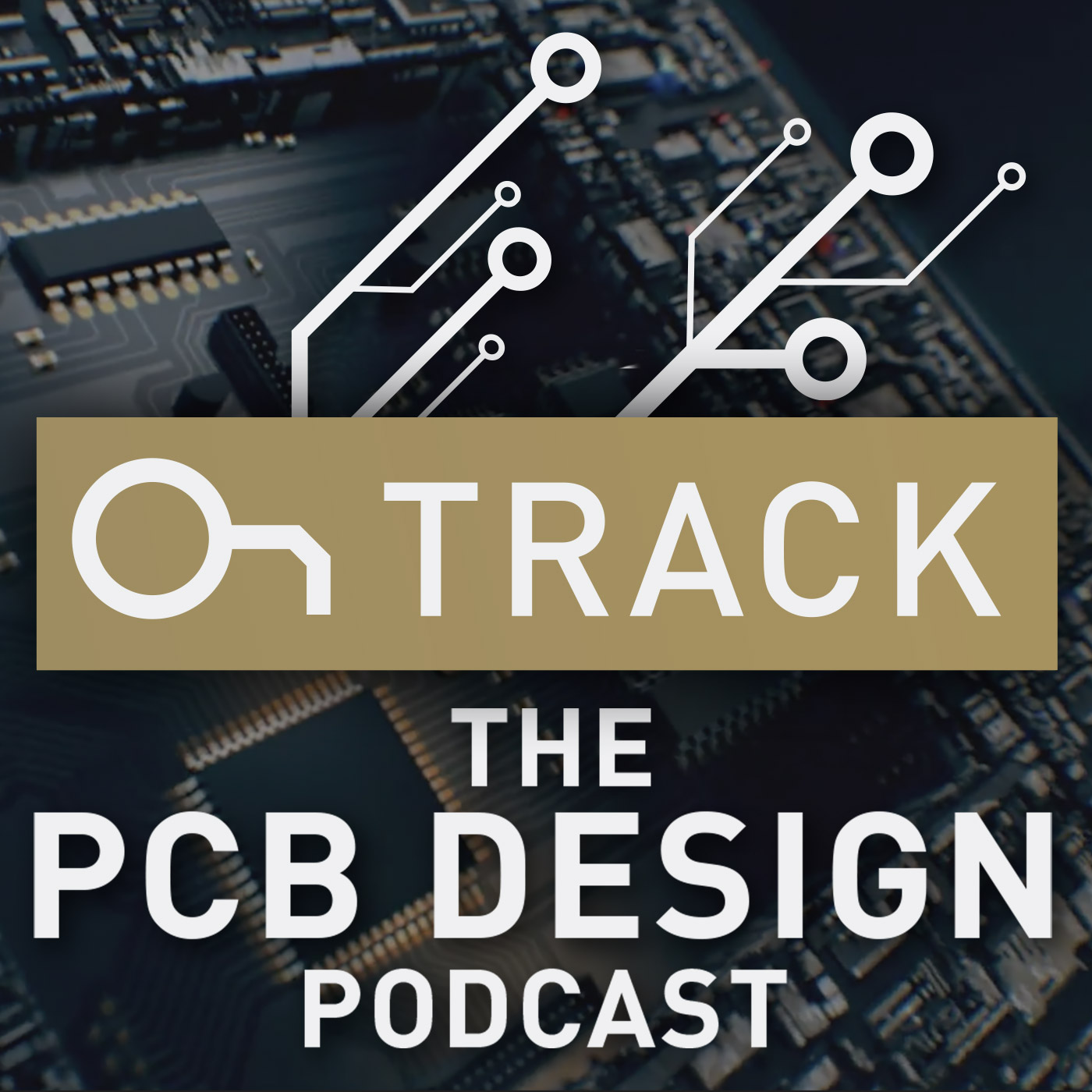Episodes
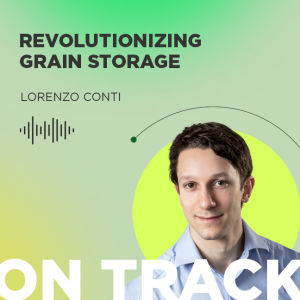
Wednesday Nov 15, 2023
Revolutionizing Grain Storage: New Tech for Sustainable Agriculture
Wednesday Nov 15, 2023
Wednesday Nov 15, 2023
In this episode of the Altium OnTrack Podcast, join host Zach Peterson as he sits down with Lorenzo Conti, Founder and Managing Director of Crover. Discover how Crover is making waves in agriculture with their pioneering locomotion technology in granular materials.
From swimming through bulk solids to monitoring grain storage conditions, Lorenzo sheds light on how Crover's robot is transforming the grain storage market. Learn about the social and environmental impact, reducing losses, preventing infestations, and improving the overall efficiency of the grain supply chain. If you're interested in the intersection of robotics, hardware, and agritech, this episode is a must-listen. Tune in to explore the future of sustainable agriculture and the exciting innovations happening at Crover.
Show Highlights:
- 0:00 Intro
- 0:59 What Crover Does
- 2:33 Background in Farming?
- 3:48 Why Pursue Robotics in This Area?
- 6:11 Bad Storage and Losses
- 7:50 Other Markets and Food Products
- 8:58 Huge Potential
- 9:26 Larger Items?
- 11:15 How Do Farmers Receive Data?
- 13:21 What the Data Attempts to Predict
- 15:04 How Farmers Use the Data
- 16:37 How Technical Do the Users Want the Data?
- 18:27 Smaller Farmers?
- 19:38 Farmers in Developing Countries?
- 21:36 Working with Government or Nonprofits?
- 22:39 Overall User and Investor Response?
- 24:23 Scaling Challenges
- 27:14 Investor Relations
- 30:09 Cost of Deploying in Developing Countries
- 32:48 Where Does Crover Go Next?
- 35:03 Outro

Wednesday Nov 15, 2023
Microelectronics Today: Government Subsidies, Education, & Culture
Wednesday Nov 15, 2023
Wednesday Nov 15, 2023
Join us on this episode of the Altium OnTrack Podcast as we sit down with David Schild, Executive Director of the Printed Circuit Board Association of America (PCBAA). In this insightful conversation, David shares the mission of PCBAA, its role in advocating for domestic printed circuit board manufacturers, and the unique challenges and opportunities in the industry.
Discover the fascinating world of printed circuit boards and substrates as David talks about the diverse members of PCBAA, ranging from woven glass producers to drilling equipment manufacturers. Get a glimpse into the innovative world of PCBAA through David's discussion of the association's impactful business cards and the importance of physical materials in conveying industry priorities.
Explore the conversation about the state of the industry, workforce challenges, and the need for sustainable growth. David sheds light on the role of automation in manufacturing facilities and the vital connection between education, advocacy, and legislation in shaping the future of the electronics industry.
Whether you're a seasoned professional or just curious about the world of printed circuit boards, this podcast provides valuable insights into the heartbeat of modern electronics. Tune in to learn more about the industry's past, present, and the exciting possibilities that lie ahead.
Don't miss out on this engaging discussion that brings the world of electronics to life. Watch the video on YouTube to see the impressive business cards and gain a visual understanding of the technology driving innovation in the electronics manufacturing sector. If you're passionate about technology, manufacturing, or simply intrigued by the inner workings of the devices we use every day, this podcast is a must-watch!
Show Highlights:
- Intro
- What David Does for PCBAA
- David's Background
- What Should the US Market Share in Microelectronics Manufacturing Be?
- Government Subsidies & a Race to the Bottom
- What Role Does Automation Play in Price Competition?
- Encouraging Young People to Get Into the Industry
- Electronics & Popular Awareness
- Is the Messaging Getting Through?
- How to Educate the Masses about Microelectronics
- PCB-7?
- It's Going to Take Time
- Impressions about PCB West
- Increased Visibility at Trade Shows
- Learn More about PCEA & PCBAA
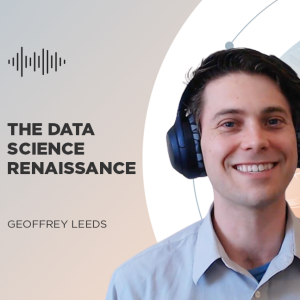
Wednesday Nov 01, 2023
The Data Science Renaissance
Wednesday Nov 01, 2023
Wednesday Nov 01, 2023
In this episode of the OnTrack Podcast, our host Zach Peterson sits down with Geoffrey Leeds, the founder of Leeds Engineering and Data Science. If you've ever wondered how production managers react to integrating data science into production operations, or if the term "data-driven decision-making" has piqued your interest, you're in for a treat.
Geoffrey shares his journey from his time at Insulectro to venturing out to help companies embrace data science. The discussion dives deep into the challenges and opportunities of applying data science in manufacturing, with a focus on improving decision-making and efficiency.
In a candid conversation, Geoffrey and Zach explore the misconceptions and hurdles faced by production managers when introduced to the world of data science. From the fear of complexity to concerns about cost and implementation, they tackle the real-world issues that arise when trying to bridge the gap between manufacturing and data science.
Whether you're a seasoned professional in the field or just starting to explore the possibilities of data-driven decision-making, this episode offers valuable insights and perspectives. Join Geoffrey Leeds and Zach Peterson as they navigate the intersections of manufacturing, data science, and the exciting potential for innovation in the industry.
Don't miss out on this engaging and informative episode of the Altium OnTrack podcast! Subscribe now and stay tuned for more discussions with industry leaders and innovators.
Show Highlights:
- Intro
- Return of Data Science
- Bad Data & Improper Recommendations
- Automated Process Solutions
- Capturing Data
- IIoT
- Onshoring & the Winds of Change
- A Plethora of Processes
- PCB Packaging
- 49:25 Manufacturing is Fun & Challenging Again
- 52:42 New Data Solutions
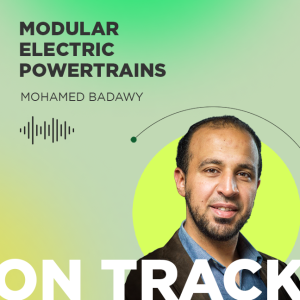
Tuesday Oct 24, 2023
Modular Electric Powertrains
Tuesday Oct 24, 2023
Tuesday Oct 24, 2023
Today we are joined by Mohamed Badawy, Founder & CEO of Scalvy Inc. He and Zach have a fascinating conversation about Modamed's company, Scalvy, and its innovative powertrain technology. As a part of this chat, the two cover how long it takes to introduce new concepts to the market, how Scalvy's tech works, AI integration, and much more.
- 0:00 Intro
- 0:55 Mohamed & Scalvy's Background
- 2:35 Mohamed's Research
- 8:14 It Takes Time to Explain a Concept
- 10:47 Modularization & Competitive Advantage
- 13:41 Safety, Reliability, & Auto Makers
- 19:05 Automotive Powertrain Standardization?
- 22:27 Creating the Powertrain Standard
- 23:15 Maintenance Costs?
- 25:00 What Happens with the Powertrain
- 27:08 AI Integration?
- 30:33 Aerospace Industry
- 34:14 Marine and Agricultural Vehicles?
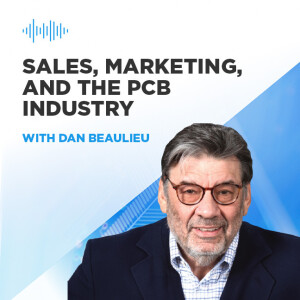
Thursday Oct 12, 2023
Sales, Marketing, and the PCB Industry
Thursday Oct 12, 2023
Thursday Oct 12, 2023
Today we are joined by Dan Beaulieu, founder and owner of Db Management Group. He and Zach chat about the PCB industry's broad marketing trends including how it's stuck in the past, the declining trade show industry, how sales reps can stay relevant, and much more.
- 0:00 Intro to Dan Beaulieu
- 5:48 Sales & Marketing Stuck in the Past
- 9:14 Impacts of the Domestic PCB Base
- 12:59 Is the Trade Show Method Going Away?
- 16:45 How do Reps Stay Relevant?
- 19:27 Focusing on Younger Designers
- 24:30 How Manufacturers Stand Out from the Competition
- 28:42 Designers and Board Shop Conflicts
- 31:42 Importance of Touring Shops
- 33:36 Capital Investment and PCB Shops
- 38:51 Focus on the Customer's Need, Then Provide It
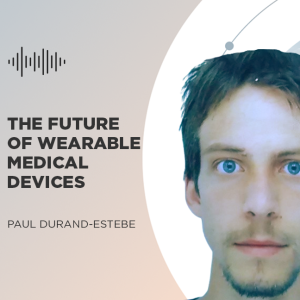
Tuesday Oct 03, 2023
Metyos & the Future of Wearable Medical Devices
Tuesday Oct 03, 2023
Tuesday Oct 03, 2023
Today we are joined by Paul Durand-Estèbe, Lead Electronic Developer at Metyos. He and Zach have a fascinating conversation about how Metyos is contributing to the future of wearable medical devices. They focus on Metyos's groundbreaking wearable glucose monitoring tech, the medical field's emergent wearables trend, and much more.
0:00 Intro
1:33 Intro to Paul and Metyos
2:56 A Lesser Invasive Glucose Monitoring Device
5:08 Better Monitoring Faster
8:14 Bad Glucose Monitoring Leads to Disastrous Results
10:52 Potential Chronic Health Monitoring Systems
13:33 Why Start with Kidney Disease?
16:36 From Monitoring to Administering Medication?
18:01 Scaling Challenges (Cutout a minute before this)
22:36 Proving the Effectiveness of the Device
26:54 What Does the Manufacturing Look Like?
31:37 Initial Response to Metyos
35:56 Doctors Receiving Real-time Data
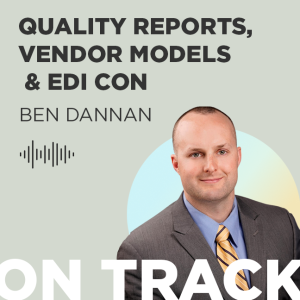
Tuesday Sep 26, 2023
Quality Reports, Vendor Models, & EDI CON
Tuesday Sep 26, 2023
Tuesday Sep 26, 2023
In this episode of the OnTrack Podcast, we have a chat with Benjamin Dannan, a defense & aerospace contractor. We talk about power integrity, high amps, quality reports, vendor models, the importance of verification, and much more.
Episode Highlights:
-
Intro
-
Ben's Background
-
Power Integrity Considerations
-
Vendor Models Quality & Accuracy
-
Trust & Verify
-
File Density Challenges
-
Die (integrated circuit) Models & Packages
-
"It's Easy to Miss Things."
-
Lost in the Translation
-
Ask for Quality Reports
-
2,000 Amp Challenges
Links and Resources:
- Watch Recent Related Episodes
- Read Related Articles:
- Connect with Benjamin Dannan on LinkedIn
- EDI CON Online 2023
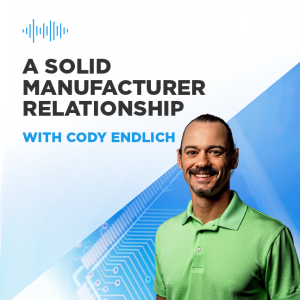
Tuesday Sep 12, 2023
Establishing a Solid Manufacturer Relationship
Tuesday Sep 12, 2023
Tuesday Sep 12, 2023
Today we have a fascinating conversation about PCB manufacturing, reshoring, testing, and much more with Cody Endlich, Head of Strategic Sourcing at MacroFab. He and Tech Consultant Zach Peterson discuss the latest trends in manufacturing, procurement, and supplier dynamics. This is a wonderful convo for anyone interested in the future of PCB sourcing and manufacturing.
- 1:00 Cody's Background
- 2:59 Internalizing the Broker Process
- 4:51 What's Different about MacroFab
- 8:25 Where Are MacroFab's Partners?
- 10:17 Reshoring Efforts
- 12:35 Copycats?
- 16:09 The Sourcing Picture
- 20:43 How MacroFab Tests
- 23:42 Bringing the Process In-House
- 26:16 Turning Heads
- 29:12 A Solid Supplier Relationship
- 34:54 Will Mexico's Trading Role Persist
- 38:13 MacroFab's Biggest Growth Area
- 39:32 Going Forward
Links and Resources:

Tuesday Sep 05, 2023
Inmox: Changing the Face of Industrial Monitoring & Maintenance
Tuesday Sep 05, 2023
Tuesday Sep 05, 2023
Today we have a chat with Daniel Kagerbauer, CTO and co-founder at Inmox. This is a fascinating conversation regarding Inmox's aim to change how industrial maintenance is done and, while their initial focus is on gearboxes, the implications for their software and sensor developments may be broadly applicable across the entire industrial landscape. The two talk about monitoring industrial systems, materials challenges, industry-specific applications, and much more.
If you're interested in advancements in the industrial space, this is the episode for you.
Show Highlights:
- Introduction to Daniel Kagerbauer CTO and co-founder of Inmox. Inmox is part of the Altium startup program called Launchpad
- Inmox is currently developing industry ready prototype and moving towards heavy industrial applications
- Commercial automotive and even the racing industry is a better fit for Inmox’s gearbox monitoring system
- Daniel describes in detail what their product look like, from a sensor oil screw that can monitor the vehicle’s lubrication system, installing T-tube and wiring local ethernets
- Data are being collected where the wear particles are present, and the oil screw with the lubricant have quite good access to essential stuff that needs measuring
- Smaller systems are more automative focus while bigger systems are applicable for wind energy versions such as a helicopter, moreover safety is utmost important
- Certification challenges can involve finances, redesigns and weight optimization
- How does the real-time particle analysis works?
- Daniel talks more about distinguishing between ferromagnetic, non-ferromagnetic, and the good old electro magnetism
- Inmox is currently in negotiation with potential customers and doing interviews with mentors from different industries
- Body vibration monitoring is more precise and reliable
- Inmox longterm vision is to promote extended lifespan to machines and pushing mechanical engineering in a more sustainable path
Links and Resources:
- Leap your start-up to the next level. Learn more about Altium Launchpad, a program designed to support early stage start-ups launch their product to the market, fast!
- Read related articles:
- Visit Inmox website
- Connect with Daniel Kagerbauer on LinkedIn
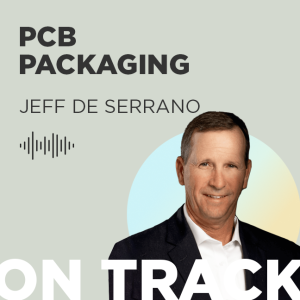
Tuesday Aug 29, 2023
PCB Packaging & the Future of Manufacturing
Tuesday Aug 29, 2023
Tuesday Aug 29, 2023
Today we're chatting with Jeff De Serrano, President of the American Division of PCB Technologies. We had a fascinating conversation about the changing nature of the PCB Manufacturing industry, focusing on aerospace, automation, AI, education, and much more. This is a wonderful episode for anyone interested in manufacturing and where the industry might be headed.
Show Highlights:
- Intro
- Intro to Jeff & PCB Technologies
- PCB Technology's Broad Reach in Aerospace
- Faster Packaging Times
- Packaging Advantages at PCB Technologies
- 2D, 2 ½D, or 3D?
- You Need the Know-How, Not Just People
- Broad Capability Won't Happen Overnight
- Semiconductor Companies Packaging?
- Workforce Challenges
- Automation Pipedream?
- Getting Students into Manufacturing
- Manufacturing is Totally Different Now
- AI Has a Long Way to Go
- Growth Areas in Electronics?
Links and Resources:
-
Check the recent related OnTrack Podcast episodes:
-
Learn more about Altium 365®, Where the world designs electronics
-
See how Octopart help you search for electronic parts. It is the most accurate and comprehensive electronic part data search engine right at your fingertips
-
Connect with Jeff De Serrano on LinkedIn
-
Visit PCB Technologies website
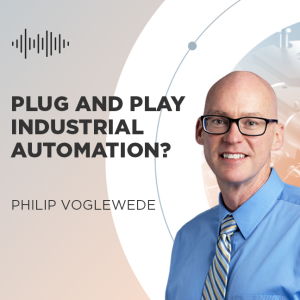
Tuesday Aug 22, 2023
Plug and Play Industrial Automation? It’s Only a Matter of Time
Tuesday Aug 22, 2023
Tuesday Aug 22, 2023
In this episode of the OnTrack Podcast, we are pleased to host a thought-provoking conversation between Tech Consultant Zach Peterson and Dr. Philip Voglewede, Professor and Associate Chair of the Department of Mechanical Engineering at Marquette University and Director at the Omron Advanced Automation Lab.
Zach and Phil have a very intriguing conversation about the role of automation in the current and future industrial landscape. Anyone interested in the current state of industrial automation, manufacturing, or labor trends won't want to miss Phil's insights, many of which are rooted in his work for the ground-breaking Omron Lab.
Show Highlights:
0:00 Intro
1:03 Phil & Omron Advanced Automation Lab
2:13 Pushing to Fail
5:27 A Space to Play
7:28 Omron's Early Achievements
11:26 De-Siloing & Student Response
16:37 Companies Noticing Student Skills
17:47 Students Handling Complex Problems
19:39 Grappling with the Role of Automation
23:05 Where Do We Get ROI?
25:18 Management is Adapting
27:14 The TOTAL Dollar Amount of Manufacturing Costs
29:33 Industrial IoT is the Achilles Heel
33:22 Plug & Play is the Goal
35:24 Make It Like Starbucks
37:13 Who Will Lead the Needed Standardization?
39:06 Will the Big Manufacturers Cooperate to Standardize?
41:15 Standardization is Only a Matter of Time
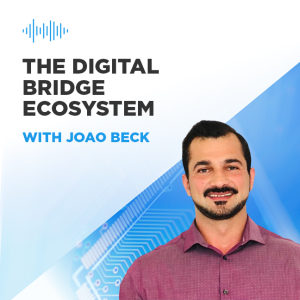
Tuesday Aug 15, 2023
The Digital Bridge Ecosystem with Joao Beck
Tuesday Aug 15, 2023
Tuesday Aug 15, 2023
There's a new workflow offering coming soon as a result of the collaboration between Altium and ANSYS. And today, we are joined by Joao Beck, Altium's Director of Enterprise Technical Marketing, to give us all the details. This new workflow is yet another step in Altium's quest toward a digital ecosystem, acting as an important bridge between ECAD and simulation Make sure to watch the entire episode so you can fully understand what's coming your way soon.
Show Highlights:
-
0:00 Intro
-
0:50 Altium's New Workflow Offering
-
4:53 MCAD CoDesigner in Simulation?
-
7:28 A Full Suite of Capabilities
-
8:20 What the Workflow Looks Like
-
10:40 What's in the Revision History
-
12:47 The Report
-
14:14 Version Control & Rolling Back Simulations?
-
16:16 Simulation to Altium & Vice Versa
-
21:43 Mechanical Simulation?
-
23:00 The Digital Bridge Ecosystem
-
25:38 Broader Access?
-
26:42 Who's This For?
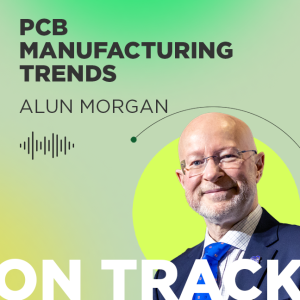
Tuesday Aug 08, 2023
PCB Manufacturing Reshoring, Automation, and Sustainability with Alun Morgan
Tuesday Aug 08, 2023
Tuesday Aug 08, 2023
We're joined today by the Technology Ambassador at Ventec and President of the European Institute for the PCB Community (EIPC), Alun Morgan. He and host Zach Peterson have a broad, thoughtful conversation centered on PCB manufacturing.
They chat about emerging manufacturing markets, potential for supplier buyouts, reshoring, automation, and much more. This is a fascinating conversation for anyone looking to get a current view on the international manufacturing market, as well as valuable insights into where it might be headed.
Show Highlights:
0:00 Intro
0:40 Current Manufacturing Trends in Europe
9:20 Growth in Packaging
14:49 Producing at Scale
21:31 Up and Coming International Manufacturing Markets
23:52 Big Manufacturers Getting Bigger?
29:21 Return to Buying Out Suppliers?
31:36 Variable Costs, PCB Manufacturing, & Reshoring
34:30 Pricing Pressures & Automation
40:39 Automation: Prices, Reliability, & Sustainability
45:04 Wrap-Up
Links and Resources:
- Watch more of Alun Morgan:
- Connect with Alun Morgan on LinkedIn
- Visit Octopart.com, The electronic part search engine

Thursday Aug 03, 2023
The Impact of the Defense Sector in the Electronic Industry Ecosystem
Thursday Aug 03, 2023
Thursday Aug 03, 2023
We have a very interesting topic today! The impact of the defense sector on the electronic industry.
Our guest Nathan Edwards, an Executive Director, U.S. Partnership for Assured Electronics (USPAE) will share with us what goes in a Defense Electronic Consortium (DEC) and how all of these impact the electronics eco-system. We will also touch a little about supply chain diversification and onshoring efforts here in the US.
Watch through the end, this is a very special episode you don’t want to miss.
We have a very interesting topic today! The impact of the defense sector on the electronic industry.
Show Highlights:
- Introduction to Nathan Edwards
- Nathan briefly share his background in the electronic industry in both government and commercial sector
- What is United States Partnership for Assured Electronics (USPAE) and what is its involvement in the Defense Electronic Consortium (DEC)?
- Nathan explains what goes on DEC
- Small and medium size electronic companies could benefit in participating in the government ecosystem
- A study shows that 86% of 649 manufacturing firms receive less than 10% of their revenue from defense
- Electronics in the banking industry, from the tamper-proof electronics, security, authenticity, and some reliability and recovery
- Is something similar to the US Defense Electronics Consortium exist in different countries?
- Nathan discusses about the recent policy chain in the Defense Production Act, Title II
- Electronic supply chain diversification and onshoring in the United States
- A policy that will go in to effect in 2027 under the National Defense Authorization Act states that semiconductors, printed circuit boards and interconnects cannot be produced by some of the companies in China
- Nathans thoughts regarding production of electronic components in Latin America, especially Mexico
- Nathan volunteers to mentor emerging talents at his school district’s high school and middle school and get them involved in electronics sector
- The electronics industry requires a full depth of STEM from chemist, manufacturers, mathematician, designers and more
- Career Technical Education (CTE) offers biomedical tech, STEM, IT, and it is sponsored under the State Department of Educations as well as the Federal Department of Education
- Two critical things to a successful onshoring are reliable, skilled workforce, and capital to invest in the state-of-the-practice equipment
Links and Resources:
- Reinventing the business of electronics. Nexar puts your business ahead of the curve, learn more here
- Watch related, previous episodes:
- Connect with Nathan Edwards via LinkedIn
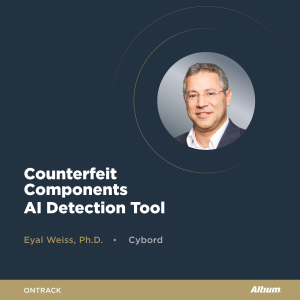
Wednesday Aug 02, 2023
Stopping the Infiltration of Counterfeit Hardware through AI
Wednesday Aug 02, 2023
Wednesday Aug 02, 2023
We are very fortunate to have Dr. Eyal Weiss for today’s episode. He is the CTO and founder of Cybord, an AI tool for detecting counterfeit hardware and electrical components.
This is a very exciting conversation. We will talk about a better, practical applications of AI in the electronics industry, outside of design.
Watch through the end and make sure to check all the additional links and resources below.
Show Highlights:
- Introduction to Dr. Eyal Weiss, CTO and founder of Cybord an AI tool for detecting counterfeit hardware and components
- Dr. Eyal Weiss's company is using AI-based component inspection services to detect counterfeits and ensure component quality.
- The system utilizes images of individual components taken during the placement process, leveraging big data and deep learning technology.
- The software integrates seamlessly with existing pick-and-place machines' internal vision systems, making it a plug-and-play solution.
- AI plays a crucial role in understanding and processing the vast diversity of component types, enabling accurate identification and fingerprinting of individual components.
- Most component failures are due to component-level issues, not board-level failures, making it crucial to focus on component quality.
- The traditional industry approach treats components as bulks, similar to handling grains, without addressing them individually.
- AI and big data technology now enable the ability to address components as individuals, allowing for better traceability and targeted recalls.
- Dr. Eyal Weiss's company uses AI and image analysis to examine individual components, providing detailed information about quality, authenticity, and potential defects.
- By analyzing individual components using AI-based inspection, manufacturers can conduct more targeted and efficient recalls based on specific fingerprint information.
- AI-driven analysis can also identify mismatches in traceability information, preventing wrong recalls and improving recall precision by targeting smaller groups of components.
- The AI system uses image recognition and natural language processing to interpret component markings and extract relevant data for traceability.
- The individual component level traceability is recommended in the latest IPC standard (IPC-1782B) and can provide the highest level of traceability with minimal additional cost.
- The AI system's feedback allows OEMs and CMs to improve their processes and make informed decisions on recalls, ensuring a win-win situation for both parties.
- Dr. Weiss wishes everyone success and a lifetime of no recalls ;)
Links and Resources:
-
Read related articles:
-
Learn more about the IPC-1782
-
Visit Octopart.com, the Electronic Parts Search Engine
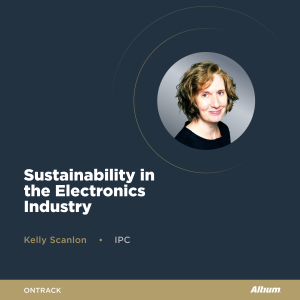
Wednesday Aug 02, 2023
Kelly Scanlon
Wednesday Aug 02, 2023
Wednesday Aug 02, 2023
Sustainability in electronics encompasses environmental, social, and corporate governance aspects, and IPC aims to make it easier for companies by providing standards, education, and advocacy to navigate these complex issues.
In this episode, we are very pleased to have Kelly Scanlon of IPC to enlighten us about the importance of sustainability in the electronics industry and how you can contribute as a PCB designer.
Show Highlights:
- Introduction to Kelly Scanlon, the Lead Sustainability Strategist at IPC
- Kelly talks about her role at IPC and her background before landing her current position
- Kelly explains that sustainability covers environmental, social, and corporate governance
- The European Union (EU) has been leaders in producing policies that have real opportunities for environmental change, in the space of sustainability
- What are the ways can companies prove their compliance to sustainability?
- Environmental sustainability in the electronics industry has well-defined processes and regulations, like the RoHS (Restriction of Hazardous Substances in Electrical and Electronic Equipment) and REACH (Registration, Evaluation, Authorisation and Restriction of Chemicals) making it easier to manage and communicate compliance
- Social sustainability poses greater challenges as there is no clear process and requires multidimensional teams to address issues like worker health, labor practices, and corporate governance
- Vendor checklists and assessments are used to vet suppliers, but there is a need for increased transparency and honesty in supply chains
- Companies rely on policies and regulations to ensure compliance throughout the supply chain and are pushing for accountability and reliability from their suppliers
- Kelly Scanlon emphasizes the need for a strong community and collaboration to address environmental, social, and governance sustainability in the electronics industry.
- Designers play a crucial role in driving sustainable practices by incorporating conscientious and intentional lifecycle management in their design decisions, and by advocating to manufacturers to prioritize sustainability
- Designers can make their voices heard by reaching out to IPC and participating in workshops, case studies, and events focused on sustainability
- IPC formed its Sustainability for Electronics Leadership Council, a team with diverse geographic background and diverse supply chain background that come together sharing their insights and expertise
- Designers and manufacturers are encouraged to connect with Kelly, ask questions, contribute your expertise, and to actively advocate sustainability efforts in the electronics industry
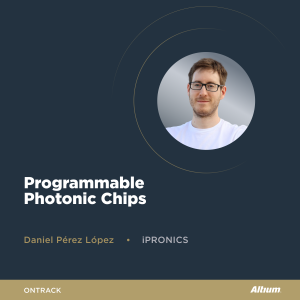
Tuesday Jul 25, 2023
Photonics, the Next Generation Communication Processors
Tuesday Jul 25, 2023
Tuesday Jul 25, 2023
- Tune in now and watch through the end, you wouldn’t want to miss this!
- introduction to Daniel Perez Lopez Co-founder and CTO of iPronics
-
What are programmable photonics?
-
The photonic field or the integrated photonic field, is mainly limited to two key volume driven market segments that are transceivers and data centers
-
One of the growing benefits of photonics is to ability to configure systems, real-timebases on the specific environmental condition and specific performance
-
Photonics technology as a complimentary technology to electronics
-
Daniel describes the structure of iPronics’s photonics processor and how it functions
-
iPronics has figured out miniaturization, they believe that reducing the form factor is a way to open their product to the bigger market
-
Is there a need for a photonic iPhones and smartphones with pure photonics processor?
-
Daniel enumerates the various photonics applications including in RF systems
-
Cointegration of lasers with with the photonics integrated circuits is no longer rocket science
-
Enhanced technology, sooner than later; integrating high performance photo ejector in the chip is no longer a challenge
- Lasers sound cool, but miniaturization or focusing on the form factor and delivering high performing systems are more of a priority
- Is there any iPronics product currently available off the shelf for integration?
- iPronics is focusing on communications space for optical based communications and management for RF communications and the processing intra data center communications
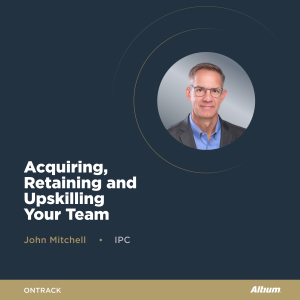
Friday Jul 07, 2023
Firing Your Hiring Habits by John Mitchell, President and CEO of IPC
Friday Jul 07, 2023
Friday Jul 07, 2023
We have a seasoned favorite guest in the podcast today. John Mitchell the President and CEO of IPC talks about his new book Firing Your Hiring Habits.
This is a very insightful conversation! We tackled acquisition, retaining and upskilling talents in your team. PCB designers, aspiring entrepreneurs and leaders in any company will surely benefit from this discussion. Make sure to watch through the end and check the additional resources below.
Show Highlights:
- Introduction to John Mitchell and his new book, Fire Your Hiring Habits
- John Mitchell shares his inspiration about writing the book and revealed who he wrote it for
- The two fundamental problems in building a team are one, acquiring the right talents, and second retaining them
- The key to retention is helping employees aspire for a career and providing them with a pathway to reach a higher goal
- “Upskilling” is also a significant factor to retaining employees especially now that we have AI’s that manage automated processes
- How is the rise of remote jobs affecting the job industry?
- A lot of people are going “hybrid” appropriate for specific positions, and found it to be very effective. Working from home 75% of the time and face to face for the rest have increased productivity and employee retention
- Human connection like in a team building can strengthen the team and can result to much better working relationships
- Does the challenges in employee turnover related to age? John has a very eye opening answer to this
- The longest chapter in John’s book talks about “company’s culture”. He explains in detail what makes a company’s culture and how sticking to principles can have a great impact to a company
- “There are always going to be limitations, but within the right limitations, there are freedoms you can afford by eliminating some things that it's just a matter of constantly asking yourself the question, "Why are we doing it this way? Why did this come about and does it still apply today?" If it does, great, we're going to keep doing it. That's an aspect we need to keep.” - John Mitchell
- Leadership loves people that brings answers
John encourages everyone to learn from every experience, good and bad - Talents leave, but they’ll come back to a company that matches their culture
- To sum it all up, John stresses the importance of knowing exactly the talents you need, and when you find them create an environment that works for them. Lastly, invest on them through trainings and give them room and path to grow
- “Fire your Hiring Habits” is available at Barnes & Noble. All proceeds goes to IPC Education Foundation
Links and Resources:
- Watch Previous Podcast Episode with John Mitchell
- Read Related Articles:
- Connect with John Mitchell via LinkedIn
- Get the book Fire Your Hiring Habits by John Mitchell

Tuesday Jun 06, 2023
Better Thermal and Power Efficiency for Your PCB
Tuesday Jun 06, 2023
Tuesday Jun 06, 2023
Better thermal efficiency, how to do better power efficiency, how to reduce losses, how to help people handle those thermal losses? This episode is a real treat.
Our guest Steven Schnier, Systems Engineer for Power Management at Texas Instruments generously shares the different strategies for designing better thermal and power efficient PCB.
Watch through the end, this episode is sure have great tips and strategies that you don’t want to miss.
Show Highlights:
- Introduction to Steven Schnier, Systems Engineer for Power Management at Texas Instruments
- Steven shares that Texas Instrument is currently focusing on better thermal efficiency, how to do better power efficiency, how to reduce losses, how to help people handle those thermal losses
- What is the best strategy in regulating the LDO?
- Eliminating the LDO to lower the noise, but keep in mind that LDO does not solve all the noise issues
- Steven briefly explains the difference between low noise, ripple, and EMI
- Using a ferrite bead filter is one of most common ways to suppress noise and switching frequency
- Steven dives in the details on the appropriate use of ferrites and shares about Texas Instrument’s integrated ferrite bead filter
- Where would you add damping in that pie circuit that you might be putting on the output of that buck converter?
- Steven shares a tip on how to reduce output voltage ripple
- Ferrite beads help with EMI concerns, crosstalk concerns, and transmission line effects, but ultimately to kill the noise and the output ripple
- Steven generously shares different strategies for designing for better thermal and power efficiency
- Various ADC (analogue-to-digital converter) products at Texas Instruments
- When does a multi-phase converter applicable to use?
- Steven talks about the Texas Instruments’ TPS series module equivalents
- BGA vs QFN, when to use what?
- Texas Instruments is going with higher power density, so expect more progress on that
Links and Resources:
- Read Power Integrity related articles
- Read: The Beginner's Guide to PCB Power Integrity: From Board to Package
- Watch related videos:
- Connect with Steven Schnier via Linkedin
- Visit Texas Instrument Website
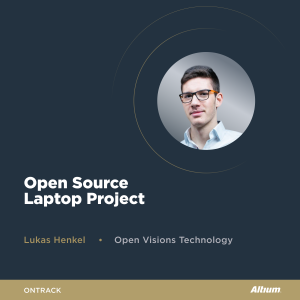
Tuesday May 30, 2023
Inspire and Educate through Open-Source Hardware Products with Lukas Henkel
Tuesday May 30, 2023
Tuesday May 30, 2023
Lukas Henkel, our guest in this episode was already into electronic engineering at age 10.
He will share with us what made him interested in designing electronics, some details about the development of his Open-source laptop project, and will even give us a sneak peek of the actual design development on Altium Designer.
You don’t want to miss this! Watch through the end and be sure to check the additional resources below.
Get Your First Month of Altium Designer® for FREE
Episode Highlights:
-
Lukassz Lawrocki, Technical Marketing Manager at Altium makes a special appearance to explain Altium’s new initiative that encourages and supports electrical engineers to create open-source projects
-
The open source Laptop project by Lukas Henkel is the first project to be supported by this new initiative
-
Introduction to Lukas Henkel
-
Lukas talks about his background and his first electronic project at age 10
-
Robert Feranec and the Altium OnTrack Podcast are just a couple of Lukas’s inspirations for discovering his interest in electronics and PCB design
-
Lukas chose a laptop for his open-source project because of its composition—a variety of components working together
-
Electrical vs mechanical, which one did Lukas find more challenging?
-
The laptop project will have a full aluminum body, which is a cheaper choice for producing prototypes in a smaller volume
-
Lukas talks about why the flex part of the enclosure is one of the challenging parts of his project
-
While there are commercial and open-source tools to help with high-speed signal optimization, complex optimization problems are best solved through a manual process — comparing solutions and comparing the impact of each domain
-
Lukas shares his transition from working with Semikron to his own company, OV Tech
-
Zach and Lukas exchange experiences in running their companies - challenges, projects, and clients
-
Lukas encourages everyone who is interested to learn more about his open-source laptop to follow him on LinkedIn for development updates
-
Design Demonstration via Altium designer
-
Watch for Lukas's next project, the Open Source Smartwatch
Links and Resources:
- Connect with Lukas Henkel via LinkedIn
- Subscribe to Robert Feranec Youtube Channel
- Watch all previous Altium OnTrack Podcast episodes
- Watch related episodes:
Read: Open Source Hardware & PCB Projects in Altium Designer

